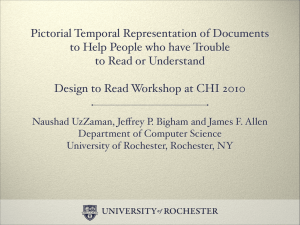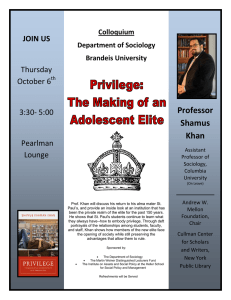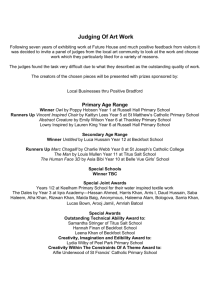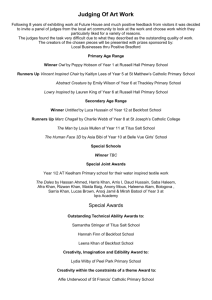Teaching Statement
advertisement
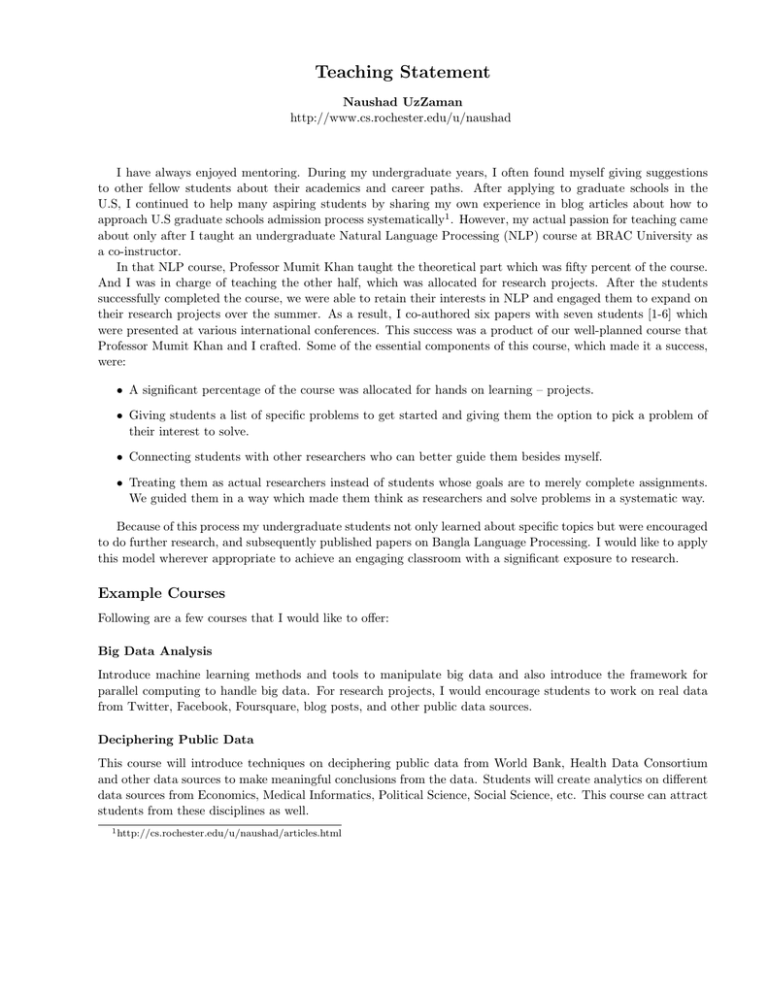
Teaching Statement Naushad UzZaman http://www.cs.rochester.edu/u/naushad I have always enjoyed mentoring. During my undergraduate years, I often found myself giving suggestions to other fellow students about their academics and career paths. After applying to graduate schools in the U.S, I continued to help many aspiring students by sharing my own experience in blog articles about how to approach U.S graduate schools admission process systematically1 . However, my actual passion for teaching came about only after I taught an undergraduate Natural Language Processing (NLP) course at BRAC University as a co-instructor. In that NLP course, Professor Mumit Khan taught the theoretical part which was fifty percent of the course. And I was in charge of teaching the other half, which was allocated for research projects. After the students successfully completed the course, we were able to retain their interests in NLP and engaged them to expand on their research projects over the summer. As a result, I co-authored six papers with seven students [1-6] which were presented at various international conferences. This success was a product of our well-planned course that Professor Mumit Khan and I crafted. Some of the essential components of this course, which made it a success, were: • A significant percentage of the course was allocated for hands on learning – projects. • Giving students a list of specific problems to get started and giving them the option to pick a problem of their interest to solve. • Connecting students with other researchers who can better guide them besides myself. • Treating them as actual researchers instead of students whose goals are to merely complete assignments. We guided them in a way which made them think as researchers and solve problems in a systematic way. Because of this process my undergraduate students not only learned about specific topics but were encouraged to do further research, and subsequently published papers on Bangla Language Processing. I would like to apply this model wherever appropriate to achieve an engaging classroom with a significant exposure to research. Example Courses Following are a few courses that I would like to offer: Big Data Analysis Introduce machine learning methods and tools to manipulate big data and also introduce the framework for parallel computing to handle big data. For research projects, I would encourage students to work on real data from Twitter, Facebook, Foursquare, blog posts, and other public data sources. Deciphering Public Data This course will introduce techniques on deciphering public data from World Bank, Health Data Consortium and other data sources to make meaningful conclusions from the data. Students will create analytics on different data sources from Economics, Medical Informatics, Political Science, Social Science, etc. This course can attract students from these disciplines as well. 1 http://cs.rochester.edu/u/naushad/articles.html UzZaman - Teaching Statement Natural Language Processing This course will give an overview of Natural Language Processing. I will introduce probabilistic models in NLP, algorithms, and applications. The spectrum for research will cover from deeper language understanding to big data analysis. Entrepreneurship One of the benefits of Computer Science is that one can start a company just by himself/herself or with a few friends without requiring expensive resources. As a result, we have lots of startup companies from Computer Science graduates. Unfortunately, many of the companies fail. However, most of these failures can be saved if they are approached systematically. I would introduce the concepts from The Lean Startup [7], Running Lean [8] and other sources to the students. This would give students the confidence for starting up companies instead of running after jobs at various companies. In the same spirit, for both the undergraduate and graduate students, I would also like to organize hackathon and startup weekend type events in the department to encourage entrepreneurship. In summary, I see teaching as a way to build strong foundation on subjects with hands on learning. I want to guide the students and give them opportunity to explore their own interests, conduct their own research, and solve problems in a creative manner. References [1] Fahim Muhammad Hasan, Naushad UzZaman and Mumit Khan. “Comparison of Unigram, Bigram, HMM and Brills POS Tagging Approaches for some South Asian Languages”, Proc. of the Conference on Language and Technology (CLT07), Pakistan, August 7 - 11, 2007. [2] Fahim Muhammad Hasan, Naushad UzZaman and Mumit Khan. “Comparison of different POS Tagging Techniques (n-gram, HMM and Brills tagger) for Bangla”, Proc. of International Conference on Systems, Computing Sciences and Software Engineering (SCS2 06) of International Joint Conferences on Computer, Information, and Systems Sciences, and Engineering (CIS2E 06), December 4 - 14, 2006. [3] Ayesha Binte Mosaddeque, Naushad UzZaman and Mumit Khan. “Rule based Automated Pronunciation Generator”, Proc. of 9th International Conference on Computer and Information Technology (ICCIT 2006), Dhaka, Bangladesh, December 2006. [4] Munirul Mansur, Naushad UzZaman and Mumit Khan. “Analysis of N-gram based text categorization for Bangla in a newspaper corpus”, Proc. of 9th International Conference on Computer and Information Technology (ICCIT 2006), Dhaka, Bangladesh, December 2006. [5] Md. Jahangir Alam, Naushad UzZaman and Mumit Khan. “N-gram based Statistical Grammar Checker for Bangla and English”, Proc. of 9th International Conference on Computer and Information Technology (ICCIT 2006), Dhaka, Bangladesh, December 2006. [6] Naira Khan, Md. Tarek Habib, Md. Jahangir Alam, Rajib Rahman, Naushad UzZaman and Mumit Khan. “History (forward n-gram) or Future (backward n-gram)? Which model to consider for n-gram analysis in Bangla?”, Proc. of 9th International Conference on Computer and Information Technology (ICCIT 2006), Dhaka, Bangladesh, December 2006. [7] Eric Ries, “The Lean Startup: How Today’s Entrepreneurs Use Continuous Innovation to Create Radically Successful Businesses”, Crown Business, 2011. [8] Ash Maurya, Running Lean: Iterate from Plan A to a Plan That Works, O’Reilly Media, 2012. 2
